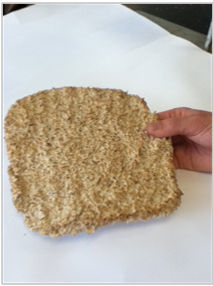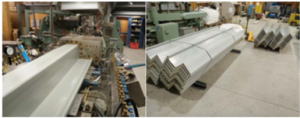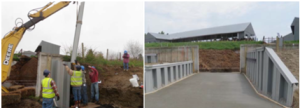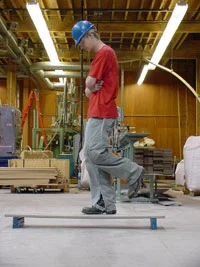25% Stronger, 100% Biobased Fiber Board
By replacing commonly used formaldehyde-based resins with a new type of binder, researchers at UMaine have developed fiber board building material that is nontoxic, made entirely from renewable materials and is 25% stronger than currently available products. The new binder includes cellulose nanofibrils (CNF), which are wood fibers about 200 micrometers in length and 30 nanometers wide. The CNF is manufactured using a UMaine proprietary mechanical process that is free from harmful chemicals or additives.
Benefits:
- Reduction in health problems and related expenses (up to $48m per year 1) caused by formaldehyde exposure.
- Up to 25% increased product strength.
- All components, precursors and processing materials are renewable and nontoxic.
Composite Panels for Blast and Ballistic Protection

The Modular Ballistic Protection System (MBPS) provides soldiers with enhanced ballistic protection where it never existed before – in their tents where they work, eat, and sleep. The system consists of composite ballistic panels that are mounted to the inside of the tent frame using an energy-absorbing connection system. Requiring no tools, the MBPS can be used to up-armor a 20ft x 32ft tent in less than 30 minutes with 4 soldiers.
US Patent 7,68,5921
Environmentally Friendly Pollutant Remediation, Dye Decolorization
PROBLEM: Organic pollutants and dyes from textile and paper plants in industrial waste streams need remediation.
SOLUTION: Using the chemically enhanced Fenton system, dyes can be remediated quickly in an environmentally safe manner.
New Composites Made from up to 60% Inexpensive, Raw Plant Material
PROBLEM: Composite manufacturers need ways to improve extruded thermoplastics using inexpensive, environmentally friendly ingredients and without slowing process time.
Low Maintainance Sheet Piling Reduces Life Cycle Costs of Retaining Walls
PROBLEM: Commonly available sheet piling used for retaining walls corrodes, increasing maintenance costs and reducing the useful life of the construction. These problems are heightened in a marine environment.
SOLUTION: Our patented wood composite sheet piling system does not corrode, which reduces overall life cycle costs. Additionally it is chemically inert and 100% recyclable.
COMpris: A New Method to Manufacture Stronger and Thicker Composites
A solution for simplifying manufacturing of utility-scale wind turbine blades?
PROBLEM: Manufacturers of large composite components such as boats or wind blades are currently limited to using non-recyclable materials and labor intensive manufacturing processes.
38% Stronger Reinforced Glulam Construction Beams

PROBLEM: Builders prefer reinforced glulam beams for applications benefiting from thier beauty or shape versatility. But glulam beams have a tendency to weaken (delaminate, or peel) on the ends when the center of the beam is bent or stressed.
SOLUTION: UMaine offers reinforced glulam beams that withstand end delamination under 38% more bending stress compared to other reinforced beams, and 95% more stress compared to non-reinforced beams.





